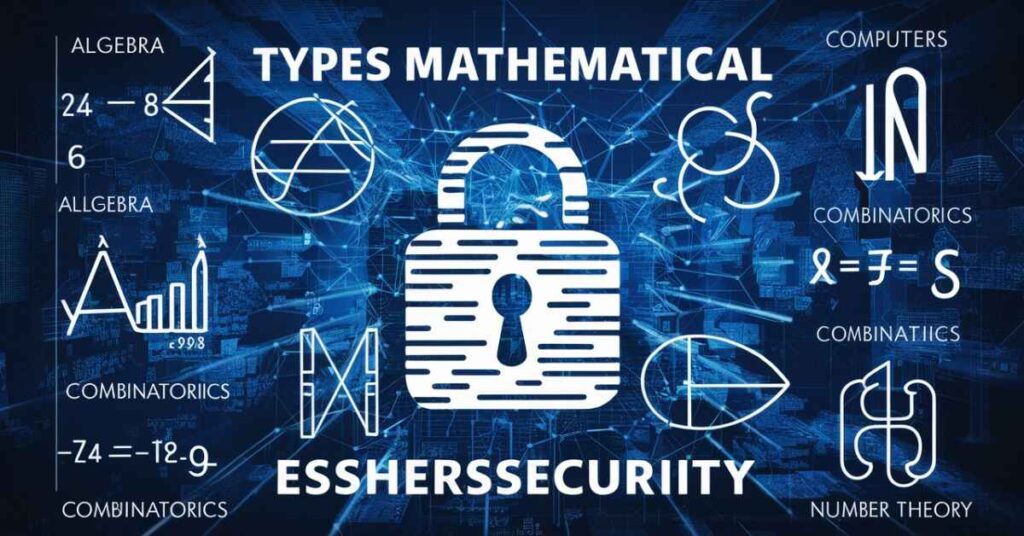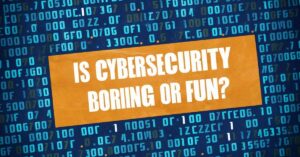In the ever-evolving landscape of digital security, a question often whispered in the corridors of tech academies and career forums is: “Does cybersecurity require math?” This query isn’t just academic—it’s a practical concern for many aspiring cyber defenders. As we dive into this digital conundrum, we’ll explore the intricate dance between numbers and network protection, and maybe even bust a few myths along the way. Does Cybersecurity Require Math? Unraveling the Numerical Mystery Behind Digital Defense.
Math Requirements for Education in Cybersecurity
Let’s face it: the thought of complex equations can make even the most enthusiastic tech aficionado break into a cold sweat. But fear not! The math behind cybersecurity isn’t always as daunting as it seems.
Undergraduate Programs
Most cybersecurity degree programs don’t expect you to be the next Einstein. They do, however, typically include courses like:
- College Algebra
- Discrete Mathematics
- Basic Statistics
- Calculus (in some cases)
These courses lay the groundwork for understanding the logical structures that underpin secure systems. For instance, discrete math helps you grasp the basics of set theory, which is crucial for managing access controls and permissions.
Graduate Programs
At the master’s level, things get a bit spicier. You might encounter:
- Advanced Cryptography
- Machine Learning for Security
- Network Analysis and Modeling
Here’s where your undergraduate math skills start to shine. That college algebra? It’s now helping you understand complex encryption algorithms. Statistics? It’s the backbone of anomaly detection in network traffic.
Certifications
Interestingly, many popular cybersecurity certifications don’t heavily emphasize math. Take the CompTIA Security+ or Certified Ethical Hacker (CEH)—these focus more on practical skills and knowledge. However, more advanced certs like the Certified Information Systems Security Professional (CISSP) do require a solid grasp of mathematical concepts, especially in risk management and cryptography.
What Type of Math Do You Need in Cybersecurity?

Now, let’s break down the math you’ll use in the field. Spoiler alert: it’s not all about crunching numbers!
Cryptography
Cryptography is where math flexes its muscles in cybersecurity. Number theory, the study of integers and their properties, is the secret sauce of many encryption algorithms. For example, RSA encryption, a cornerstone of secure communications, relies on the practical difficulty of factoring the product of two large prime numbers.
“Mathematics is the queen of the sciences and number theory is the queen of mathematics.” – Carl Friedrich Gauss
This quote might as well be the anthem of cryptographers worldwide!
Data Analysis
In the realm of threat detection, statistical analysis is your trusty sidekick. You’ll use probability theory to assess the likelihood of security incidents and identify patterns that could indicate a breach. Tools like Splunk or ELK stack often handle the heavy lifting, but understanding the underlying principles is crucial for interpreting results accurately.
Machine Learning
As AI creeps into cybersecurity, so does the need for more advanced math. Linear algebra and calculus form the backbone of many machine learning algorithms used in predictive threat analysis. Don’t panic, though—tools like TensorFlow and PyTorch can abstract much of the complexity.
Network Security
Graph theory might sound like something from a geometry class, but it’s vital in understanding network topologies. When you’re mapping out potential attack vectors or optimizing network defenses, you’re essentially working with complex graphs.
Algorithm Development
Creating efficient security algorithms requires a good grasp of computational complexity. Big O notation, which describes the performance or complexity of an algorithm, becomes your best friend here. It helps you understand why some security measures might slow down a system while others can run seamlessly in the background.
Risk Assessment
Quantitative risk analysis often involves statistical methods to predict and evaluate potential security incidents. Here’s a simple formula often used in risk assessment:
Risk = Probability of Incident × Impact of IncidentThis basic equation can help prioritize security measures and allocate resources effectively.
Alternatives to Reduce Math Usage

If you’re breaking out in hives at the thought of all this math, take a deep breath. There are ways to navigate the cybersecurity landscape without being a math whiz.
Focus on Practical Skills
Many cybersecurity roles emphasize hands-on experience over theoretical knowledge. Building a solid portfolio of projects, participating in capture-the-flag competitions, and obtaining practical certifications can often outweigh pure mathematical prowess.
Utilize Tools and Software
Modern cybersecurity tools often have user-friendly interfaces that abstract complex mathematical operations. For instance, vulnerability scanners like Nessus or network monitoring tools like Wireshark do much of the heavy lifting for you.
Collaborate
In the real world, cybersecurity is a team sport. You’ll often work alongside colleagues with diverse skill sets. While you might excel at policy development or social engineering prevention, you can lean on team members with stronger mathematical backgrounds for tasks requiring heavy number-crunching.
The Connection Between Math and Cybersecurity
Historically, mathematics and security have been intertwined since the days of ancient ciphers. The famous Enigma machine of World War II was eventually cracked thanks to the mathematical prowess of Alan Turing and his team.
Today, as cyber threats become more sophisticated, the role of math in cybersecurity continues to evolve. While it’s true that not every cybersecurity professional needs to be a math genius, a solid foundation can provide a deeper understanding of the underlying principles that keep our digital world secure.
FAQs
What kind of math do you need for cyber security?
The math most relevant to cybersecurity includes:
- Basic algebra
- Statistics and probability
- Discrete mathematics
- Some calculus (for advanced roles)
Is cybersecurity hard to study?
Like any technical field, cybersecurity has its challenges. However, with dedication and the right resources, it’s achievable. Many find the practical aspects of cybersecurity, like ethical hacking exercises, engaging and fun. Does Cybersecurity Require Math? Unraveling the Numerical Mystery Behind Digital Defense.
Do you need maths A level for cyber security?
In the US, while a strong math background can be beneficial, many cybersecurity programs don’t specifically require advanced high school math courses. However, comfort with mathematical thinking is certainly an asset.
Does cyber security involve coding?
Yes, many cybersecurity roles involve coding to some degree. Common languages include Python, C++, and JavaScript. However, the level of coding required can vary significantly depending on the specific role.
Is cybersecurity easier than coding?
This is subjective and depends on individual strengths. Some find the problem-solving aspects of cybersecurity more intuitive than pure coding. Others prefer the clear-cut nature of programming. Many cybersecurity roles involve a mix of both.
Conclusion
So, does cybersecurity require math? The answer isn’t a simple yes or no. While a strong mathematical foundation can certainly be an asset in the field, it’s not an insurmountable barrier to entry. The cybersecurity landscape is vast and varied, with roles that cater to a wide range of skills and strengths.
If you’re passionate about protecting digital assets and solving complex puzzles, don’t let concerns about math deter you from exploring a career in cybersecurity. With the right mindset, resources, and a willingness to learn, you can carve out a successful path in this exciting and essential field.
Remember, in the end, cybersecurity is about creative problem-solving and staying one step ahead of the bad guys. Whether you do that with advanced calculus or intuitive pattern recognition is up to you. The digital world needs defenders of all stripes—so why not throw your hat in the ring?








